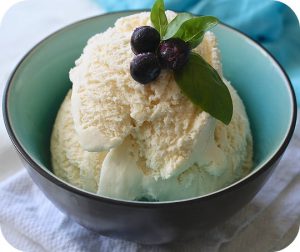 Although people sometimes use “vanilla” as a byword for “boring,” the complicated global industry that surrounds this flavor is far from dull. 80 percent of the world’s vanilla crop is grown in Madagascar, which has the perfect climate for vanilla orchids. These plants only bloom one day a year and must be pollinated by hand, followed by another 9 months of waiting for the fruit to mature into pods. Then comes another weeks-long process of curing the plants using steam, sun, and shade before they’re ready to be shipped around the world.
Although people sometimes use “vanilla” as a byword for “boring,” the complicated global industry that surrounds this flavor is far from dull. 80 percent of the world’s vanilla crop is grown in Madagascar, which has the perfect climate for vanilla orchids. These plants only bloom one day a year and must be pollinated by hand, followed by another 9 months of waiting for the fruit to mature into pods. Then comes another weeks-long process of curing the plants using steam, sun, and shade before they’re ready to be shipped around the world.
As you might expect, intricate supply chains such as these can be thrown off by unexpected events like bad weather. Unfortunately, that is precisely what happened to the global vanilla supply when a cyclone tore through Madagascar in March 2017. The storm killed dozens of people and destroyed much of the vanilla crop, leading to surging prices that threatened the livelihoods of the country’s farmers. To make matters worse, thieves began to target the few remaining vanilla supplies as the price of the spice rose above precious metals like silver. Corrupt middlemen also began to take advantage of financially desperate farmers, sometimes claiming as much as 60 percent of the cut for themselves.
“In addition to ripping off farmers, these middlemen mix premature vanilla with legitimate vanilla so you won’t get the full yield of vanilla,“ said Michael Okoroafor, vice president of sustainability at McCormick and Co. “These practices result in premature vanilla and depressed farmers’ incomes.” To combat this growing corruption and stabilize vanilla prices, companies have begun to work closely with Madagascar’s farmers. For instance, the French food firm Danone and the candy company Mars have invested $10 million in the Livelihoods Fund for Family Farming. Along with providing materials like vanilla seedlings, this organization will also teach sustainable farming methods and establish a coded stamp system to keep thieves away. What’s more, several food companies have agreed to purchase vanilla directly from a cooperative of about 1,000 growers, thus eliminating the need for middlemen. Still, experts expect vanilla prices to remain high as these new crops take time to mature, so don’t be surprised if your Haagen-Daaz costs a little bit more in the coming months.
Questions:
- Why has the price of vanilla skyrocketed recently?
- Do you think the efforts of the Livelihoods Fund for Family Farming and their corporate backers will stabilize the vanilla supply? Why or why not?
Sources: Aryn Baker, “Vanilla Is Nearly as Expensive as Silver. That Spells Trouble for Madagascar,” Time, June 13, 2018; Uliana Pavlova, “Vanilla Sounds Plain, but It’s Gotten Very Expensive. Here’s Why,” Los Angeles Times, July 27, 2018.
